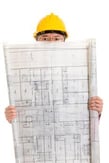The Advantages Of Design/Build For Remodeling Clients

Selling Design/Build isn’t easy. Many consumers haven’t heard about it and most of those who have really don’t know that much about it. If you want to sell Design/Build, or for that matter sell any product or service, you must let the buyer know what benefits it will have for him or her.
Rather than put on a dog and pony show for your clients, take time to uncover their real concerns, underlying motivations and project requirements. Then share with your clients those advantages of the Design/Build process that address what you have uncovered, provided you are confident in taking on those responsibilities. As more contractors and consumers come to understand and realize the benefits of the Design/Build process, selling and buying the concept will become easier for everyone.
To be successful with Design/Build consider the client’s advantages and the Design/Builder’s responsibilities described within this article as interdependent.
Single Source Responsibility
Perhaps the most appealing and easy to recognize advantages that Design/Build offers are the convenience and comfort of one-stop shopping. The client looks to a single entity to take full responsibility for design, construction and satisfactory completion; delivering the project on time and on budget. As a natural consequence there is less finger pointing because as ideas are generated, all team members make decisions with a cooperative approach. This means greater efficiency, cooperation instead of conflict, and a better project for the time and money invested. When this team approach works well, it fosters an enjoyable and mutually beneficial way of doing business for the client and the Design/Build team of professionals. As the design phase of the project moves forward, all parties get to know each other while working out and establishing the terms of the relationship. This establishes trust as well as a mutual respect for the realities of living through a project, long before the dust takes over, rather than trying to do so while the dust is created. These advantages are often removed or compromised if those involved, including the client, work separately of each other during the design stage.
Cost Control
 Trust is the key consideration here, and can become the client’s most valued benefit. Provided that a realist budget is established and agreed upon prior to entering into a Design/Build agreement, the Design/Builder takes on the responsibility of protecting the budget as design happens. Do not sell this as an advantage unless you are confident that you and the client agree on the scope of work. Savings and or budget control are then achieved through better planning. The Owner can exercise his desired degree of control over design, with the added advantage of knowing the cost implications of each decision as it happens. In the client’s eyes, the trust will be broken if he or she sees the Design/Builder as the cause for going over budget. It’s their money, not yours. To avoid this perceived breach of trust, before you offer or entertain alternate design ideas that will increase costs, ask your client for permission to spend more than the agreed budget.
Trust is the key consideration here, and can become the client’s most valued benefit. Provided that a realist budget is established and agreed upon prior to entering into a Design/Build agreement, the Design/Builder takes on the responsibility of protecting the budget as design happens. Do not sell this as an advantage unless you are confident that you and the client agree on the scope of work. Savings and or budget control are then achieved through better planning. The Owner can exercise his desired degree of control over design, with the added advantage of knowing the cost implications of each decision as it happens. In the client’s eyes, the trust will be broken if he or she sees the Design/Builder as the cause for going over budget. It’s their money, not yours. To avoid this perceived breach of trust, before you offer or entertain alternate design ideas that will increase costs, ask your client for permission to spend more than the agreed budget.
Promising your clients cost control must be backed up with design and construction expertise, as well as the company systems required, to know what should (or will not) be included and how much it will cost. By having this ability, professional fees such as engineering or surveying are kept to a minimum as they can be determined before beginning design of the project. The client benefits by having a guaranteed maximum price that is set as soon as the scope of the project is determined.

Quality Control
Quality of the design and construction of the project can happen by default if the Design/Builder’s team is working “together” to meet the client's performance requirements. The architect, engineer, and contractor are able to focus on the project, with an emphasis on quality, rather than protecting their own individual interests. The lines of communication are simplified and the chances for misunderstandings are reduced. The construction expertise of the contractor and the design expertise of the design professional are melded together to produce a greater value for the owner than that which might be realized if both were working independently, perhaps in a vacuum. Additionally, quality is maintained by the discovery of most problems before starting and the implementation of real solutions.
Quicker Delivery Time

The client saves time and trouble by dealing with a single source for all matters rather than separately with a contractor, an architect, an engineer, and subcontractors. Bidding periods and redesign time are eliminated. Overall time to design and build the project is substantially reduced because design and construction activities overlap. The contractor can proceed with early procurement of critical materials and scheduling of labor and subcontractors for greater effectiveness. This means the project can be on the contractor’s production schedule sooner.
If it is necessary to meet client’s deadlines, Design/Build lends itself readily to "Fast Tracking", where construction begins while detail drawings are still in process. The project can be completed in less time because work can begin before all the elements of the design are complete. For example the foundation can be completed to beat the frost, while the selection of windows and doors and how they will be detailed have yet to be completed. This fast tracking can reduce the owner’s interim financing costs and will permit the owner to occupy the project at an earlier date.

 Yes, becoming a real Design/Builder will be an evolution of change, if you are willing and able to commit to making the changes. The changes will not be easy and will require getting out of your current comfort zone to gain new experiences and results.
Yes, becoming a real Design/Builder will be an evolution of change, if you are willing and able to commit to making the changes. The changes will not be easy and will require getting out of your current comfort zone to gain new experiences and results. Trust is earned. If you do Design/Build well with some clients they will come to trust you and will then let those they refer you to know you and your process can be trusted.
Trust is earned. If you do Design/Build well with some clients they will come to trust you and will then let those they refer you to know you and your process can be trusted.

 With a well thought out strategy for offering design services contractors can differentiate their businesses and attract better quality clients and projects. However if their offering is not well thought out contractors can lose a lot of money and waste a lot of time.
With a well thought out strategy for offering design services contractors can differentiate their businesses and attract better quality clients and projects. However if their offering is not well thought out contractors can lose a lot of money and waste a lot of time. 

 #4: Use a supporting marketing and sales strategy
#4: Use a supporting marketing and sales strategy
 Trust is the key consideration here, and can become the client’s most valued benefit. Provided that a realist budget is established and agreed upon prior to entering into a Design/Build agreement, the Design/Builder takes on the responsibility of protecting the budget as design happens. Do not sell this as an advantage unless you are confident that you and the client agree on the scope of work. Savings and or budget control are then achieved through better planning. The Owner can exercise his desired degree of control over design, with the added advantage of knowing the cost implications of each decision as it happens. In the client’s eyes, the trust will be broken if he or she sees the Design/Builder as the cause for going over budget. It’s their money, not yours. To avoid this perceived breach of trust, before you offer or entertain alternate design ideas that will increase costs, ask your client for permission to spend more than the agreed budget.
Trust is the key consideration here, and can become the client’s most valued benefit. Provided that a realist budget is established and agreed upon prior to entering into a Design/Build agreement, the Design/Builder takes on the responsibility of protecting the budget as design happens. Do not sell this as an advantage unless you are confident that you and the client agree on the scope of work. Savings and or budget control are then achieved through better planning. The Owner can exercise his desired degree of control over design, with the added advantage of knowing the cost implications of each decision as it happens. In the client’s eyes, the trust will be broken if he or she sees the Design/Builder as the cause for going over budget. It’s their money, not yours. To avoid this perceived breach of trust, before you offer or entertain alternate design ideas that will increase costs, ask your client for permission to spend more than the agreed budget.
 An experienced Management Team that has created and follows a strategic and sustainable business plan, implements industry best practices and continuously identifies and mentors strong leadership within the team in each department.
An experienced Management Team that has created and follows a strategic and sustainable business plan, implements industry best practices and continuously identifies and mentors strong leadership within the team in each department. A
A  A Design System that properly identifies and documents the information needed by the client as well as the Design/Builder's project team and serves as a communication tool to make sure the design and final project serve the client's purposes within the agreed budget and timeline
A Design System that properly identifies and documents the information needed by the client as well as the Design/Builder's project team and serves as a communication tool to make sure the design and final project serve the client's purposes within the agreed budget and timeline A
A  Design/Build has caused a major role reversal. In most Design/Build situations, the contractor is now choosing the designer, after the project or design retainer has been sold! Finding a design professional who will work in this new role can be a challenge, but if the relationship is built for mutual benefit, all parties win, including the homeowner.
Design/Build has caused a major role reversal. In most Design/Build situations, the contractor is now choosing the designer, after the project or design retainer has been sold! Finding a design professional who will work in this new role can be a challenge, but if the relationship is built for mutual benefit, all parties win, including the homeowner.

 Not all contractors or homeowners have creative design skills, but most can tell a good design from a bad one. A drive through your local area may provide a few good examples of projects where the contractor completed the design, but perhaps should have stuck just to the build part. The project could have met the client’s needs for space or function, but the end result may have been a T-1-11 box added onto a Victorian gem.
Not all contractors or homeowners have creative design skills, but most can tell a good design from a bad one. A drive through your local area may provide a few good examples of projects where the contractor completed the design, but perhaps should have stuck just to the build part. The project could have met the client’s needs for space or function, but the end result may have been a T-1-11 box added onto a Victorian gem.

 I find it is quite challenging when working with a designer/architect who isn’t part of the contractor’s team and, really, isn’t necessarily on the homeowner’s team either. It’s not that they’re against either of those entities but if they’re working individually they’re about creating a plan for a job and they are simply not always up on the cost impact of possible changes/designs they’re suggesting. OR, they give a very low-ball cost and then the homeowner is blown away when the contractor costs it out accordingly. I suggest homeowners work with a firm that is going to have all of their team members on the same page, at the same time, in the same place.
I find it is quite challenging when working with a designer/architect who isn’t part of the contractor’s team and, really, isn’t necessarily on the homeowner’s team either. It’s not that they’re against either of those entities but if they’re working individually they’re about creating a plan for a job and they are simply not always up on the cost impact of possible changes/designs they’re suggesting. OR, they give a very low-ball cost and then the homeowner is blown away when the contractor costs it out accordingly. I suggest homeowners work with a firm that is going to have all of their team members on the same page, at the same time, in the same place.  I’ve worked with designers who charge $3,000 for a bathroom design including tile lay-out and then want me to make the decisions about the actual lay-out, correct measurements, etc. They were charging money for something they really weren’t that knowledgeable about and didn’t feel confident in. When it’s a design/build firm that’s all inclusive, when one member of the team completes the initial design, the person actually drawing plans steps in and it progresses from there in an orderly fashion.
I’ve worked with designers who charge $3,000 for a bathroom design including tile lay-out and then want me to make the decisions about the actual lay-out, correct measurements, etc. They were charging money for something they really weren’t that knowledgeable about and didn’t feel confident in. When it’s a design/build firm that’s all inclusive, when one member of the team completes the initial design, the person actually drawing plans steps in and it progresses from there in an orderly fashion.





